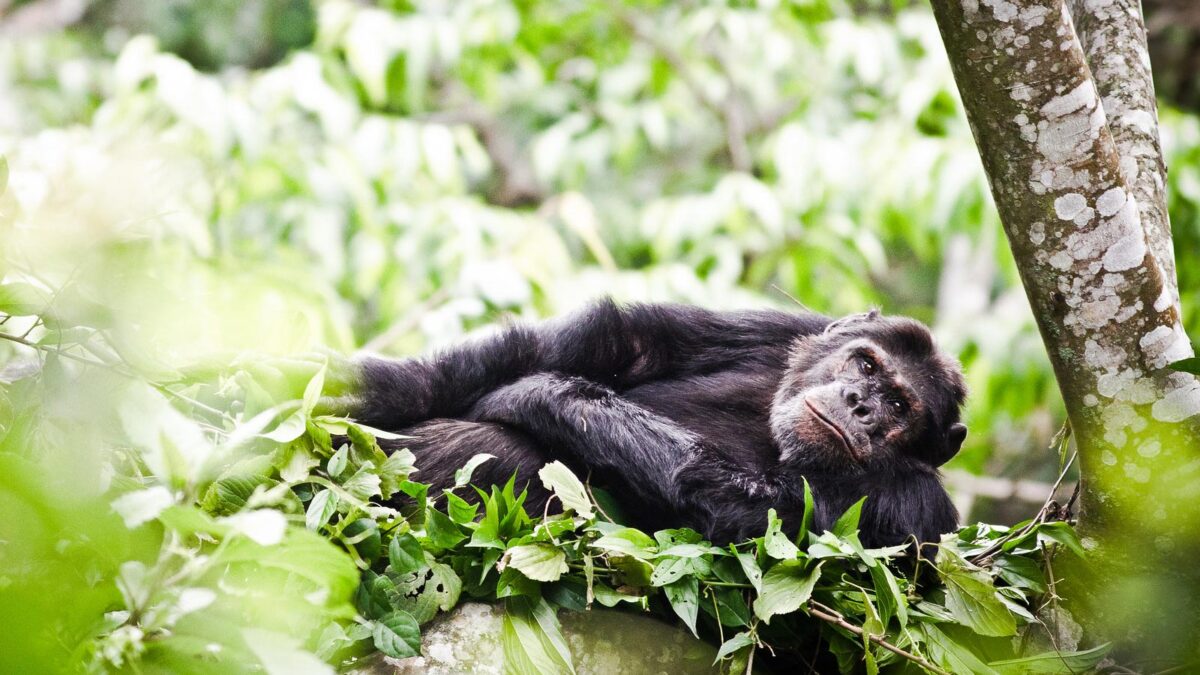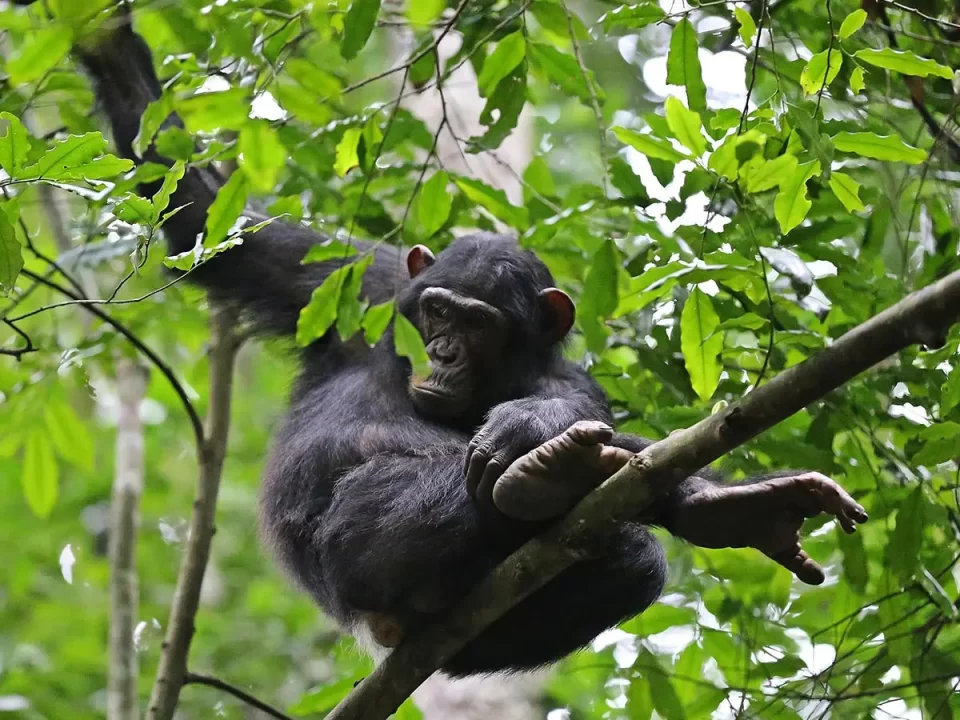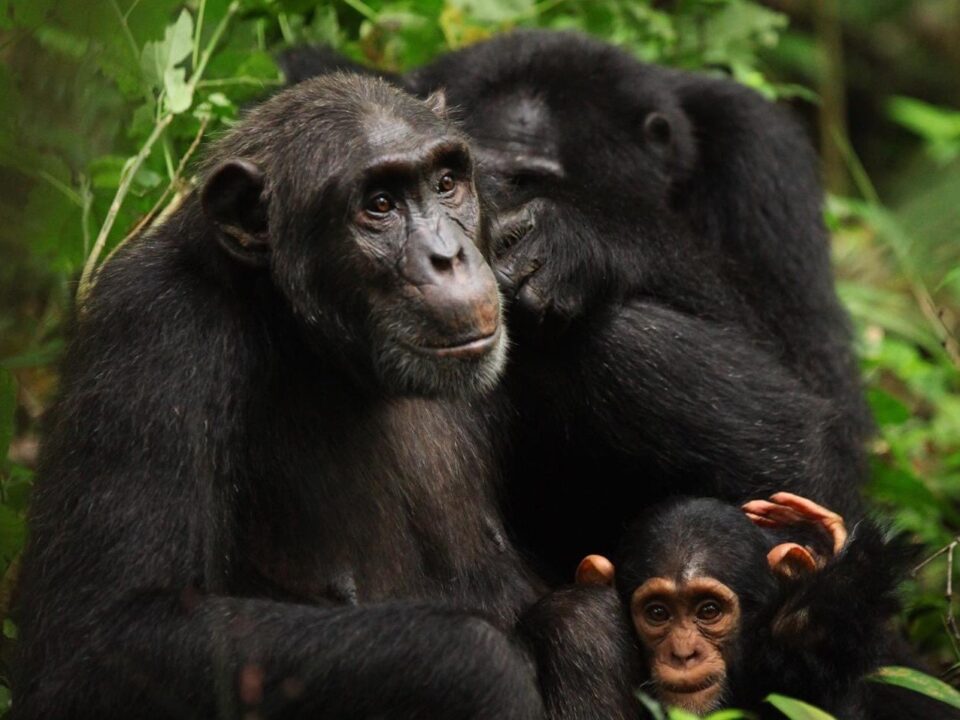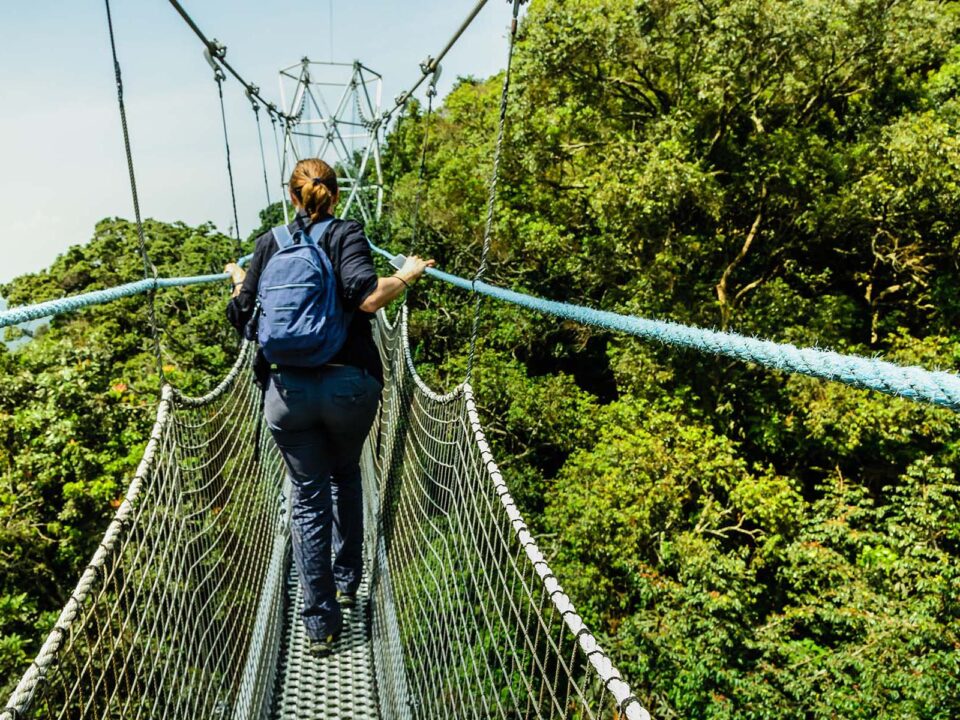Compare Nyungwe and Kibale For Chimp Trekking

Mountain Gorilla Trekking in Volcanoes National Park
July 25, 2023
Compare Golden Monkey Trekking in Uganda & Rwanda
July 25, 2023Comparing Nyungwe Forest and Kibale Forest National Parks for Chimpanzee Trekking
Nyungwe Forest in Rwanda and Kibale Forest in Uganda stand out as the top chimp trekking destinations in Africa, offering unparalleled primate experiences. One remarkable advantage of both parks is their proximity to the gorilla trekking destinations in their respective countries, allowing travelers to witness both chimpanzees and mountain gorillas during the same trip.
Both Nyungwe and Kibale are easily accessible, with just a 5-6-hour drive from the International Airport in Kigali or Entebbe, as well as local airstrips within short driving distances. Planning a trip to either country and spending time with our closest relatives, the chimpanzees, in their natural habitat is a seamless experience.
Chimpanzee trekking is an unforgettable adventure that connects visitors to our natural history, creating a profound bond with our closest relatives. Looking into the eyes of a wild chimpanzee amidst the ancient jungle and recognizing the similarities we share with them is an invaluable experience.
Guided chimp trekking adventures are available daily in both Nyungwe Forest, Rwanda, and Kibale Forest, Uganda, providing the opportunity to get within a few feet of these impressive wild primates. For travelers seeking such enriching experiences, chimpanzee trekking becomes an essential part of their journey.
However, it’s important to note that chimpanzee trekking involves physical exertion, as keeping up with wild chimps is an active experience that can be demanding. The chimpanzee groups seldom stay in one place unless they have recently finished a foraging expedition, which means the trek can be thrilling and adventurous. It’s advisable to do some simple exercises before embarking on the trek to ensure you are prepared for the physical demands.
Now, let’s take a closer look at the pros and cons of chimpanzee trekking in Nyungwe Forest and Kibale Forest.
Chimp Trekking in Nyungwe Forest: Pros & Cons
Chimpanzee trekking in Nyungwe Forest is one of the main adventure attractions in Rwanda and combines seamlessly with gorilla trekking in Volcanoes National Park, just 250 km to the north. Nyungwe Forest, located on Rwanda’s southern border, boasts a rugged Rift Valley landscape, serving as a crucial freshwater source for Rwanda and giving rise to the Congo and Nile Rivers.
In addition to chimpanzees, Nyungwe Forest is home to 13 other primate species, 75 mammal species, over 300 bird species, and offers numerous forest hiking trails, providing a diverse and captivating experience for nature enthusiasts.
Apart from chimpanzee trekking, visitors to Nyungwe Forest can enjoy nature hikes, especially the forest canopy walk. After an encounter with the lively chimpanzees, the canopy walk allows visitors to stroll 70 meters high above the forest canopy, providing an exhilarating view of the rainforest jungle – a unique feature not found in Kibale.
Nyungwe Forest boasts an impressive array of activities to complement the chimpanzee trekking experience, particularly the scenic hiking trails. Visitors can spend a week in Nyungwe and remain captivated by the diverse offerings. Additionally, the Gisakura visitor center is home to a habituated troop of colobus monkeys, which can steal the spotlight during the visit.
One major advantage Nyungwe has over Kibale is the lower cost of the chimpanzee trekking permit, priced at $90, making it a more budget-friendly option. However, as with all budget choices, there are a few drawbacks to consider.
On the downside, Nyungwe Forest’s trails demand more stamina to navigate compared to Kibale, as the rugged and steep terrain can become muddy, especially after rainfall. Additionally, there is a limited selection of tourist accommodations near the visitor center, potentially requiring travelers to lodge far from the chimpanzee trekking starting point and incurring additional transport costs.
Furthermore, Nyungwe’s focus on high-cost, low-volume tourism might not cater well to independent or budget travelers, which is in contrast to the more diverse options available in Kibale.
Lastly, the sighting percentage of chimpanzees in Nyungwe is lower compared to Kibale. Given the vast area of the park (340 square miles) and the chimpanzees’ mobility, there is no guarantee of immediate sightings, which could result in a longer trek to find the chimps.
Chimp Trekking in Kibale Forest: Pros & Cons
Kibale Forest, on the other hand, promises a more favorable chimp trekking experience than Nyungwe Forest due to its navigable flat terrain and abundant population of habituated chimpanzees. Kibale Forest boasts the highest concentration of chimpanzees and various other primate species in Central Africa, including the red colobus mangabey, L’Hoest’s monkey, olive baboon, black-and-white colobus, vervet, and blue monkey.
One key advantage of Kibale is the increased likelihood of chimpanzee sightings with every visit, making it an outstanding choice for chimp trekking compared to Nyungwe. Moreover, Kibale offers a full-day habituation experience, allowing visitors to spend the entire day with the chimps. In contrast, Nyungwe only offers regular half-day experiences, and sightings are not guaranteed.
Kibale Forest also provides a wide selection of lodging options within trekking distance, catering to both budget and high-cost travelers. Chimpanzee trekking in Kibale begins at 7:30 am, a more reasonable time to reach the visitor center for the briefing before embarking on the experience.
On the flip side, combining chimp trekking in Kibale with gorilla trekking in Bwindi may require additional travel time, as the distance between the two destinations is relatively long, and the roads are not as smooth as in Rwanda. Travelers may consider adding a buffer, such as spending a night in Queen Elizabeth National Park to accommodate the drive time between the parks.
Best Time to Go for Chimp Trekking in Nyungwe & Kibale
The best time to plan a chimp trekking safari in either Nyungwe or Kibale is during the region’s annual dry seasons of June to September. The dry trekking trails promise a more pleasant experience than trekking in the rain, allowing for a more relaxed time with the primates.
However, the rainy seasons of March to May and November are also good times to spot the chimps. During these months, the presence of ripe fruits in the trees tends to keep the chimps in one area, making it easier to find them. Nevertheless, the rain can be a disruption for most travelers, so few choose to brave the wet conditions and instead opt for the dry seasons.
While chimp trekking permits in Nyungwe and Kibale are readily available throughout the year, it is recommended to book permits in advance if traveling during the dry season. Accommodations tend to fill up quickly during the dry season, which is the peak travel period in the region. Booking early ensures travelers secure lodging for their chimp trekking experience.
Booking a Chimp Trekking Safari
For those interested in a chimp trekking safari in Rwanda or Uganda, Trek Africa Expeditions is the ideal choice. With our experience in operating primate safaris, we handle all aspects of the trip, including booking permits, accommodations, and transportation, ensuring a professional touch throughout the journey.
We also make it easier to plan a combination chimp and gorilla trekking adventure, taking care of all ground handling so that travelers can focus on the captivating experiences within Africa’s lush forest jungles. For inquiries and a free quote, travelers can reach us at info@trekafricatours.com for prompt assistance.




